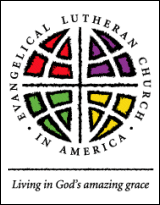HISTORY OF OUR CHURCH

History of Our Synod
The ELCA Takes Shape
The CLU proposals included the structure and operating procedures for a new group, the Commission for a New Lutheran Church (CNLC), and a timetable for the churches:
The 1984 conventions to discuss, review, and respond to a statement of theological understandings and ecclesial principles, and a narrative description of the new church; The 1986 conventions to discuss, review, and respond to the articles of incorporation of the new church, the constitution and bylaws of the new church, and be able to take action to cease functioning by Dec. 31, 1987.
The 70-member CNLC, its members deliberately chosen to be widely representative of the membership of all the merging bodies, met 10 times over the next five years, making full reports which were widely disseminated to church members.
By August 1986 the CNLC had completed its work and again the three church bodies met in simultaneous conventions, again with telephone hook-ups, and voted overwhelmingly to accept the constitution and bylaws of the new church as well as the proposed agreement and plan of merger, thus creating the fourth largest Protestant body in the United States. The Evangelical Lutheran Church in America was finally born at its constituting convention in Columbus, Ohio, April 30-May 3, 1987.
Summarized from the Information at elca.org.
New Scandinavia Beginning
For more than 135 years faithful pastors have met the spiritual need of the people in this area beginning with traveling missionaries from 1869 to 1875. In 1875 the “Nye Scandinavia Menighet” was formed with families of Lutheran faith who traveled here from Norway. Meetings were held in homes and school houses until the church building was erected in 1881. Over the years many improvements and additions were added to the original structure and furnishings, including a beautiful altar and altar ring, the “Good Shepherd” altar painting, pulpit and baptismal font. The beautiful brass light fixtures were purchased for $11 each, and later converted to electricity. In 1898 the steeple and sacristy were added to the building and a bell purchased. The building was raised and a basement built under it in 1947 to replace “Ioka Hall” which was an old school building across the road that served as a fellowship hall and Sunday School. In 1953 the church was renovated and redecorated with stained glass windows, and walls painted by a church artist. An educational wing was added in 1965. A handicap lift was installed in 2006 to transport people between the basement and sanctuary. In 2008 a beautiful new entrance was built with the loving labor of several of our church members and the lift was converted to 3 stages to also include the new entrance. Over the years many other improvements were added such as vinyl siding, handicap ramp, sound system, improved lighting, and computer system. At various times in its history, New Scandinavia has been part of a parish with other congregations, including Hay River, Vermillion, Solum, Dovre, Chetek, Faaberg, Barron and Dallas. Since 1913 it has been part of a two-point parish with Dallas Lutheran Church which was organized in 1892. Since 1875 the parish has been served by 19 pastors: Reverends H. Haakenson, P. Dietrickson, J. Waage, L.S. Gutteboe, H.J. Helsem, A. J. Oerke, H. Lund,. O. L. Kirkeberg, A.O. Running, Hj. S. Froiland, Duane A. Bottjen, Lyle J. Ness, N.S. Magelssen, Erling N. Carlsen, Mark & Linnea Papke-Larson, David Kebschull, Ralph Marquardt, and Robert Friese. The “Ladies Aid” was organized in 1887 and continues today as New Scandinavia Lutheran Church Women, and three Mission Circles: Bethany, Helping Hand and Willing Workers, who meet regularly for Bible study, quilting and fellowship. On December 10, 2010 the church building was destroyed by fire, but the congregation continued to worship at the Dallas Church to bear witness to Jesus Christ and His redeeming work.
The old church was razed and a new church building was erected on the same site. The first service and dedication was held at the new church on May 19, 2013. Two of the original light fixtures and two of the stained glass windows were salvaged from the old church and incorporated into the new structure. Church members, Jerry Huset, Gary Wigen and Tom Ebler crafted the new altar, lecturn and other items. The altar was built to closely resemble the original altar, and a painting of the Good Shepherd created by Tootie Larson to replicate the original painting. The building is one level with a sanctuary, fellowship hall, Sunday school rooms, kitchen, offices, and storage room. The bell from the old church was also salvaged and now rings from the new steeple. A new Rodgers organ, a Yamaha electronic piano, and new sound and video system were purchased.
NEW SCANDINAVIA CEMETERY
New Scandinavia Cemetery site